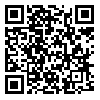Volume 16, Issue 4 (Winter 2013)
Physiol Pharmacol 2013, 16(4): 340-349 |
Back to browse issues page
Download citation:
BibTeX | RIS | EndNote | Medlars | ProCite | Reference Manager | RefWorks
Send citation to:



BibTeX | RIS | EndNote | Medlars | ProCite | Reference Manager | RefWorks
Send citation to:
Nasri M, Alizadeh A M, Khori V, Hajizadeh S, Khodayari S. A novel isolated dual perfusion/superfusion heart model for physiological and pharmacological evaluation of mammalian heart preparations. Physiol Pharmacol 2013; 16 (4) :340-349
URL: http://ppj.phypha.ir/article-1-840-en.html
URL: http://ppj.phypha.ir/article-1-840-en.html
Abstract: (10227 Views)
Abstract
Introduction: Isolated perfused heart models such as perfusion and superfusion are commonly used for mammalian
heart research. However, there are several fundamental limitations in the current techniques. In perfusion model, a
suitable cannula is connected to the aorta and the perfusion is retrogradely performed. But, electrode displacement is a
potential unwanted event resulted from heart contractions. In superfusion model, atrioventricular node (AV) node area
is completely visible and fixed in the tissue bath after appropriate preparation, but tissue ischemia is inevitable due to
the absence of cell to cell nutrition. The aim of the present study was to create a novel isolated dual
perfusion/superfusion model to be used in heart physiological and pharmacological studies.
Methods: The rabbit hearts (n=10) were excised. After preparation of proper sections, the electrodes were attached
till the steady state appeared. The stimulation protocols consisting Wenckebach and recovery were then carried out
during the isolated dual perfusion/superfusion as well as perfusion and superfusion models.
Results: The AV node conduction time was increased from 33±4 ms in the isolated dual perfusion/superfusion heart
model to 43±5 and 52±5 ms in perfusion and superfusion models, respectively (P<0.05). In addition, Wenckebach cycle
length, effective and functional refractory periods were increased in perfusion and superfusion models compared to the
isolated dual perfusion/superfusion model (P<0.05).
Conclusion: This study shows the superiority of the isolated dual perfusion/superfusion heart model in tissue
nutrition compared to the other common methods of mammalian heart studies.
Type of Manuscript: Experimental research article |
Subject:
Cardiovascular Physiology/Pharmacology
| Rights and permissions | |
 |
This work is licensed under a Creative Commons Attribution-NonCommercial 4.0 International License. |





